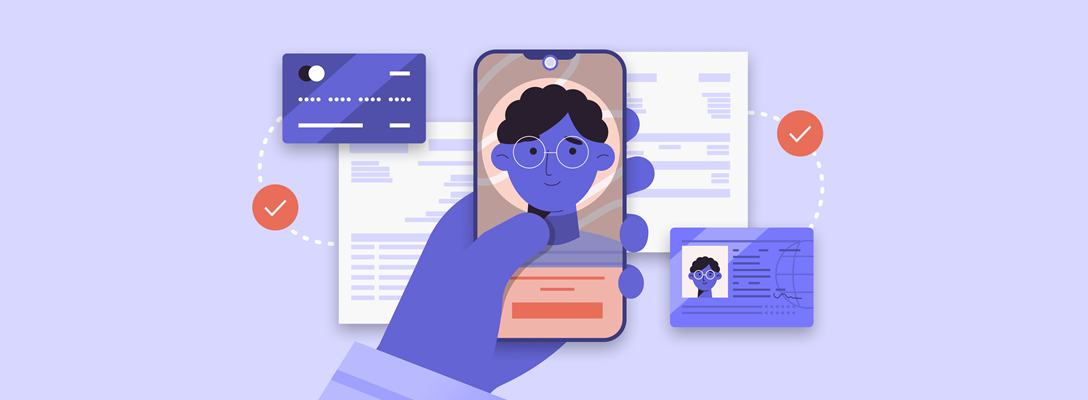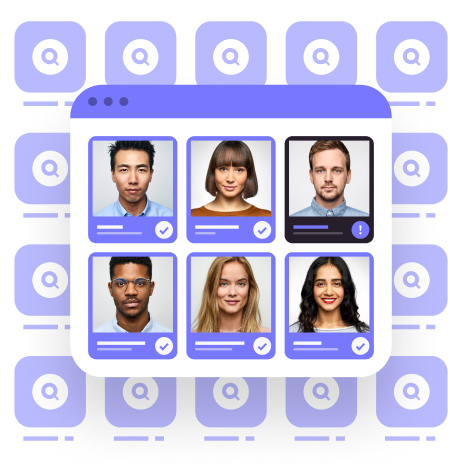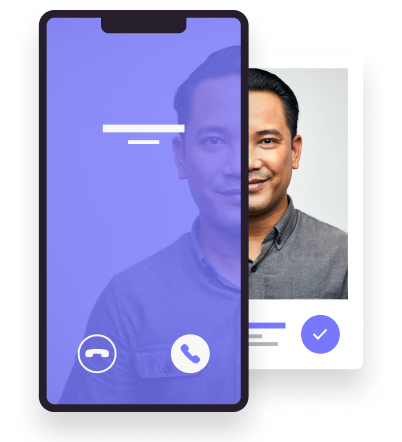
What is identity verification and how does it work?
Identity verification is the concept of proving that an identity is a real one. It’s about proving a person is who they say they are and that it’s a real person behind the actions. It’s commonly used in financial processes, such as opening a bank account, and it allows you to do business with or provide services to that person because his or her identity is verified.
In most places around the world, identity verification uses data such as name, DOB and address to prove an identity is real. We do this because, without it, we can’t trust that someone is a real identity, exposing businesses to exposed risk.
Identity verification is an important part of Know Your Customer (KYC), Customer Due Diligence (CDD) or age verification, which is outlined in money laundering regulations and industry guidance globally. So, let’s go through what identity verification is and why it’s so important for preventing fraud and building trust.
What is digital identity verification?
Digital identity verification is the process of proving that an identity is real without ever having to meet someone face-to-face. It confirms that a person is who they say they are and that the personal information they have provided isn’t fake or stolen (identity fraud). By layering technology digital identity verification also helps ensure that it is actually a person behind the screen and not fake identities – now much more easily created with the rise of criminal technology
To verify someone’s identity, we can take names, date of birth (DOB), addresses and other relevant identifiers and make sure that they also exist in a digital format on a trusted data set. These can be credit bureaus, official government documents or mobile operator databases. Verification is strengthened by applying negative data sets (attributes that cannot be associated with this identity) and other innovative types of data to increase confidence in that identity.
How does digital Identity verification work?
Digital identity verification focuses on collecting and verifying this personal information, typically at the point of onboarding a new customer to a business and matching it against trusted sources and testing to ensure it is real, verifiable data or not. This works by comparing the data a person sends over, whether that’s a document such as a passport or biometric data such as a picture of their face and comparing that against a verified data set. This can include government records, credit references or even mobile data.
Digital identity verification speeds up the verification process, which is necessary for the fast pace of a digital world in which the majority of our transactions take place online. Customers nowadays expect and demand to be able to sign up for a product or service quickly and start using it immediately, so identity verification must not interrupt or impede that customer experience too much.
Delivering a smooth customer experience, however, has to be balanced with a secure identity verification process that ensures a business is safeguarded and remains fully compliant and individuals are protected from identity fraud. With so much of life now online, there is more data than ever before that can be misused if not protected, so the identity verification process is crucial.
Data Verification
There are different approaches to digital identity verification. Data-oriented digital identity verification involves the matching of personal data – name, DOB, address and sometimes national ID numbers – against a selection of trusted comprehensive global data sources.
The number of international identity data sources around the world can make this complex for any business trading internationally and requiring global data coverage. Also, without a universal way to format data (DOB is a common example of how data can be written differently in each country), it is shared and recorded in different ways, further complicating identity verification.
And of course, the world doesn’t stand still. People move house and names change, which makes matching against multiple data points and trusted data sources best practice for a brand seeking full confidence that the identity that’s been presented has been seen and trusted before, and that it would be safe to do business with that person.
Pass more customers at speed with direct access to all three major UK credit bureaus.

Document Verification
Scanning and capturing information from a government-issued identity document and verifying the document as genuine is an important document-based approach to digital identity verification.
Typically, these identity documents include passports, ID cards and driving licences, as these are official documents that have specific features, such as watermarks, fonts and rounded corners, that can help to detect and signal cases of document tampering and identity fraud.
For accurate document identity verification worldwide, a business requires access to a comprehensive global database of identity documentation. Optical character recognition (OCR), AI and authenticity algorithms are deployed by digital identity document verification solutions to analyse and match the image of a document against the officially issued template of that document.
So, what’s identity authentication?
As well as verifying that an identity is a genuine identity, a business needs to check that it belongs to the person presenting it so that they can trust that person is who they claim to be. This process is called identity authentication – it relies on data that is difficult for anyone but the person to produce, such as biometric data.
A returning customer may be asked to re-authenticate her or his identity multiple times or even every time she or he accesses their account to ensure it’s the same person each time and no fraudulent transactions take place on a legitimate account.
Biometric solutions providing additional proof and extra protection for higher risk needs.

How does Identity authentication work?
There are various ways to complete identity authentication and some methods may be used in combination.
Facial recognition and liveness checks, for example, can compare a prospective customer’s identity document with their actual characteristics and physical measurements, proving that the person who is presenting the document is, in fact, the legitimate owner of it.
Mobile is another popular way to securely authenticate identity. A mobile number is personal to an individual and mobile is becoming the primary enabling platform in our lives. Knowing that a person is the owner of that number is a secure way of authenticating a digital identity and preventing synthetic identity fraud.
Why is identity verification important?
Identity verification is the key to unlocking customer trust for successful companies. Without identity verification, we would operate in a world of anonymity; in a digital world that is experiencing increased levels of fraud and criminal activity, this leaves people and businesses at risk.
To know your customer (KYC) is a legal requirement for regulated industries and a best practice for all business. Digital identity verification ensures companies understand who it is they are dealing with, before engaging in any transaction that could cause harm or loss to the business or individual, protecting all involved.
How does identity verification help fight fraud?
Crime occurs when people act behind a mask or false identity. In the same way a bank robber would wear a mask and gloves to hide their physical identity, face and fingerprints, cyber criminals mask their identity by creating synthetic identities or by fraudulently claiming a legitimate identity as their own.
Digital identity verification makes it more difficult to steal or create a fake identity, reducing the risk of identity fraud.

Tips for building trust in your business
1. Work with an expert digital identity verification solution provider
The digital world has no physical borders – any business can trade globally. Digital barriers, like trust, speed, accuracy and customer experience, can all be overcome with the right data and technology.
By using a digital identity verification solution specially designed for a global business, you can quickly and easily verify the identities of your customers around the world and ensure you stay compliant with international regulations.
2. Keep your business compliant
For regulated businesses, such as those within the healthcare, banking and pharmaceutical industries, knowing your customer (KYC) compliance is an important part of the process of establishing trust between a business and a customer.
While KYC compliance is a requirement in regulated industries, knowing your customer should be best practice for any growing business looking to transact and interact with trust and confidence.
3. Balance safety with great customer experience
Speed and convenience matter as much as security for successful brands looking to build customer relationships based on trust. A great experience and a safe experience are indivisible for business growth.
Intelligent digital identity verification solutions can be integrated into your existing processes quickly and easily, ensuring your business only gets genuine customers through the door and blocks fraudsters, without impacting the customer experience.
4. Choose a configurable solution that works for your business
Different industries tend to take different approaches to balancing safety and customer experience wherever they operate. By configuring your identity verification solution to fit the specific needs and requirements of your business, you get to decide who makes the grade.
Successfully set up those verification rules at the start and you can specify who is safe to onboard. This allows you to automatically accept or decline and refer to decisions based on your own approach to risk.
5. Be ready to expand your business to new markets
As your business grows, your digital identity verification solution needs to provide your business with access to global identity data sources and a comprehensive international identity document library. You’ll need to continue to run rigorous identity verification checks no matter where an individual is located - onboarding good customers first time round while preventing fraud and meeting global and local regulation compliance.
Sign up for more expert insight
Hear from us when we launch new research, guides and reports.



